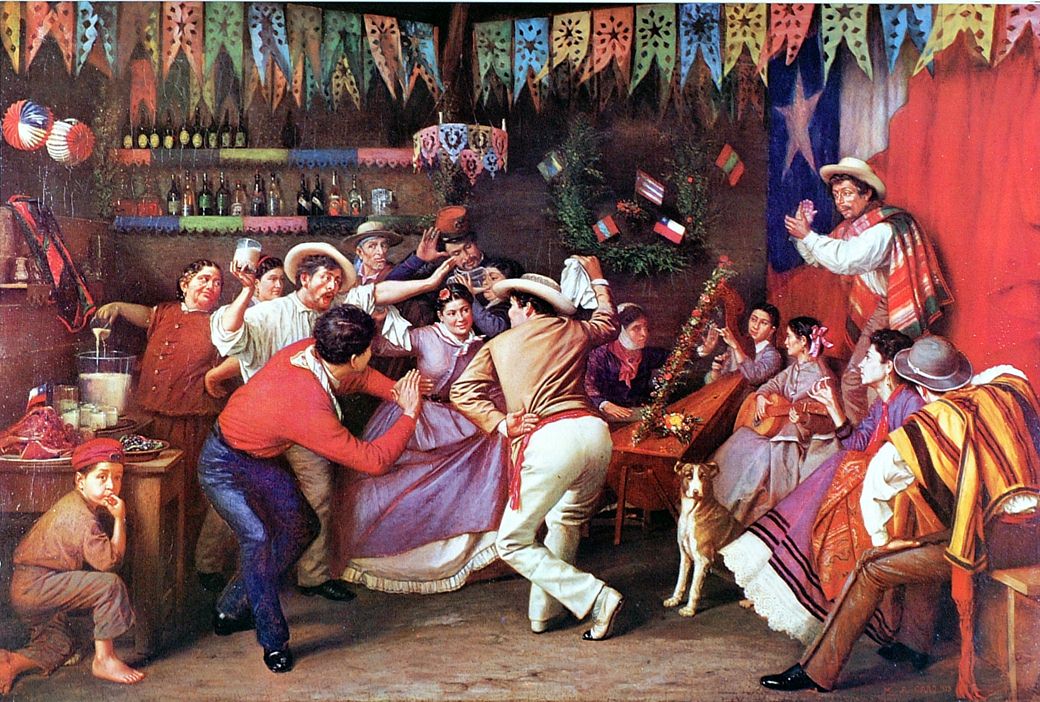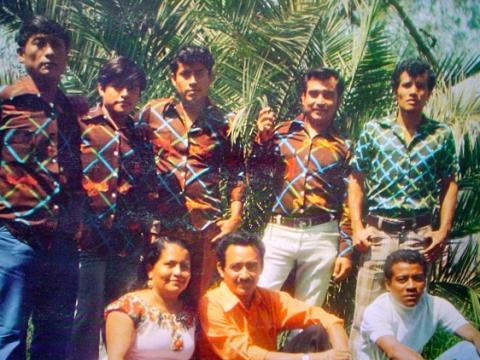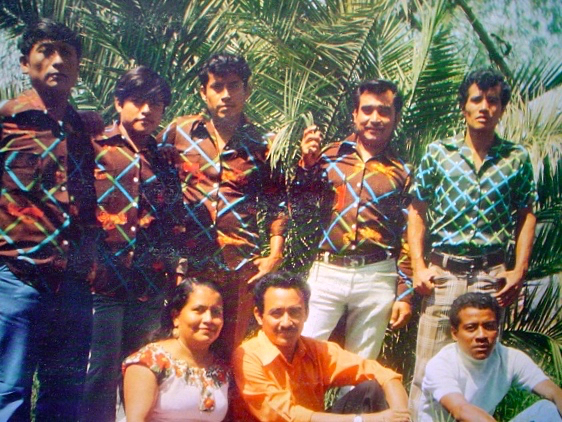La Chilena: A Mexican Musical Migration
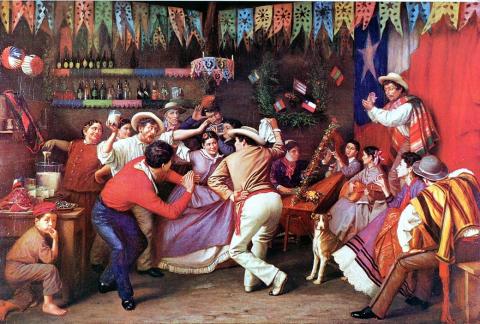
I’ve been listening to Latin music all my life, especially Mexican music. So it’s not every day that I discover a whole new genre, with its own special history. But that’s just what happened recently while I was researching disaster songs in the Frontera Collection. The genre I discovered completely by chance is called La Chilena. And though it’s named for the country in South America, the song and dance style actually come from the coastal area of southern Mexico known as La Costa Chica, along the states of Guerrero and Oaxaca.
As its name suggests, the genre traces its roots to the signature style of folk music from Chile, called la cueca. In Mexico, it has evolved as a distinctive native form, fusing with local styles, as we shall see in a moment. It can be jarring to find a musical form transplanted in an unexpected place. So how did it happen in this case?
History tells us that the style was brought to southern Mexico by sailors from Chile starting in the early 1800s. The arrival of the Chileans and their culture on Mexico’s southern shores is traced to the ship Araucano, which docked in Acapulco in December of 1821, according to one account attributed to Chilean author Pablo Garrido in his 1979 book Historial de la Cueca. The Araucano was the advance ship in a fleet sent by Chilean liberator Bernardo O´Higgins (1778-1842) to assist the Mexicans in their revolt against Spain. But by the time the ship got there, independence and already been won. So the Chilean sailors joined in the celebration the best way they knew how, singing and dancing the traditional cueca on the streets with their jubilant Mexican hosts.
The influx of ships from Chile intensified during the California Gold Rush of the mid-1800s. Heading north in search of riches, Chilean vessels full of miners and prospectors stopped along the way at Mexican ports from Acapulco in Guerrero to Puerto Escondido in Oaxaca. Many decided to stay, adding another infusion of Chilean culture to the Costa Chica.
A brief recap of this history is contained in this YouTube video from TV Chile, entitled “La Chilena Mexicana.” At the beginning, a young man speaking in rhyme makes this proclamation: “Saludos de Pinotepa, donde nació la chilena” (Greetings from Pinotepa, where the chilena was born).
He’s referring to the city officially named Santiago Pinotepa Nacional. But his claim is debatable, as some sources say another town, Santiago Jamiltepec, site of an annual festival of the music, is the real cradle of the chilena. Be that as it may, it was in reading about Pinotepa that I discovered the genre. In my last blog on disaster songs, I wrote about the song “Cataclismo En Pinotepa,” which describes a public panic that gripped the residents of Pinotepa in 1977 following earthquake predictions made by scientists in the United States. The song was written by the late Higinio Peláez Ramos, a composer and performer with deep family roots in the Costa Chica. While researching his background, I learned he was devoted to the preservation and promotion of the region’s rich folkloric music, including la chilena. And that was the first I had heard of the transplanted genre.
Taking root in Mexico, the chilena has evolved into a distinctive native form, quite apart from the original cueca. Today, the remaining Andean vestiges in the Mexican style are basically the cueca’s the rhythmic beat, the 6/8 time and the dancers’ use of the handkerchief, according to the article “La ‘Chilena’ en Guerrero” from an excellent instructional website from Chile.
“Once in the lands of Guerrero and Oaxaca, the chilena began absorbing diverse influences until it became a variant of the Mexican son, with which it shares musical and chorographical traits,” states the article. “Danced by indigenous people, blacks and mestizos, the chilena has evolved with it its own regional characteristics.”
Musically, the chilena is a lyrical style performed within a variety of instrumental formats. Originally, it was played with string ensemble including violins and harp. During the mid-1900s, many popular trios played chilenas, dropping the violins for guitars and requintos. Mexican composer Alvaro Carrillo, author of many famous boleros of the era, is also known for penning several chilenas, including one that is appropriately titled “Pinotepa.” Today, chilenas are popularly played by bandas with driving percussion and brash horn and wind sections, as can be heard in this very different version of the same Carrillo song, performed by Pepe Ramos, known as “Rey de las Chilenas.”
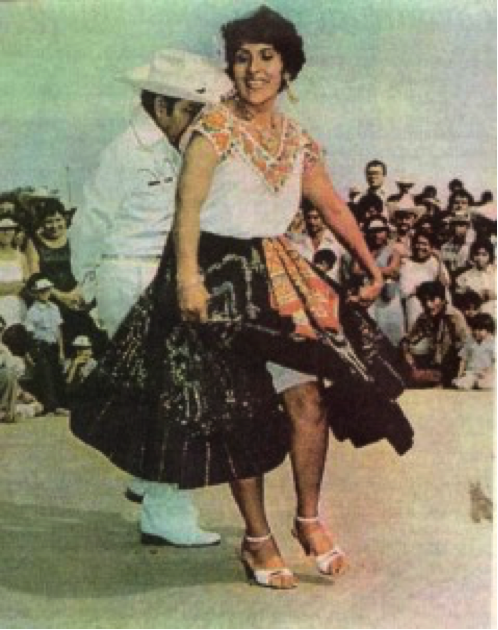 Mexicans also gave their sown stamp to the dance steps, derived from the folkloric style of the Chilean cueca. The Mexican chilena borrows the cueca’s hopping, prancing steps and the dancers still use handkerchiefs waved in circular motions above their heads. Like the music, however, the dance for the chilena was also Mexicanized, as shown in this video, with a brief English introduction.
Mexicans also gave their sown stamp to the dance steps, derived from the folkloric style of the Chilean cueca. The Mexican chilena borrows the cueca’s hopping, prancing steps and the dancers still use handkerchiefs waved in circular motions above their heads. Like the music, however, the dance for the chilena was also Mexicanized, as shown in this video, with a brief English introduction.
The Frontera Collection contains several examples of the Mexican chilena, as well as the original Chilean cueca. Most of the cueca recordings are on 78-rpm discs. They reflect a traditional style with string or orchestral accompaniment, such as “Viva Chile” by Los Huasos de Chincolco, or the courtly accompaniment for Spanish baritone Juan Pulido singing the Ernesto Lecuona composition, “Chilena Gentil.” (The Chilena of this title refers to a woman, not the genre.) There’s also more recent cuecas, such as “Los 60 Granaderos” by Mexico’s Trio Los Panchos and “La Espiga” by ranchera singer Lola Beltran, in a huapango-style arrangement by Mariachi Vargas de Tecalitlán, a total Mexican adaptation of the style.
The search for chilenas by genre, however, can be slightly misleading. For example, the results yield one 78-rpm recording, “Corazones Partidos” by Dúo Cornejo-Cáceres, which is actually a traditional cueca but isidentified as a “cueca chilena,” meaning from Chile, not the genre from Mexico. The genre search also shows just one version of what is considered the epitome of the Mexican chilena, “La Sanmarqueña,” an ode to the women of San Marcos, Guerrero. But a search by the song title, on the other hand, gives us three other versions of “La Sanmarqueña,” not identified specifically as chilenas. That’s because genres are only noted in the database when the genre name appears on the record label itself. (Curiously, the one song identified under the genre search, by Los Cancioneros Del Sur on Columbia records, does not appear under title search because it is spelled as two words, San Marqueña, rather than the usual one-word title.) The lesson is, keep digging!
“La Sanmarqueña” is considered such a cornerstone of the music that there’s even a 25-minute mini documentary exploring the history of the song. The narrator explores an issue over the authorship, often credited to Agustín Ramirez, as it is on two of the Frontera recordings. However, the video establishes through interviews that it was actually written by an Afro-Mexican priest named Emilio Vázquez Jiménez, who reportedly had an eye for the region’s beautiful women. The narrator even identifies the subject of the priest’s inspiration: the Sanmarqueña Doña Rosa Baltazar. But the woman’s indentity is also debated. The video acknowledges that the subject of the song is a different young woman, Eleuteria Genchi, nicknamed affectionately “la Cumanchín.”
“La Sanmarqueña” was elevated to classical status in a symphonic arrangement by the Orquesta Sinfónica de Acapaulco. The song was also memorialized in the 1952 film Subida al Cielo by celebrated director Luis Buñuel and entered that year in the Cannes Film Fesitval. Known in English as “Mexican Bus Ride,” the film features the voluptious Lilia Prado perforing “La Sanmarqueña,” but as a retort to the small-town bragging by a woman from a different place.
The chilena has become so versatile it moves easily from the symphony hall to the dancehall to the streets. “Everyone dances the chilena, without regard to social class,” states the Chilean instructional website. “In the coastal fandangos, the music has no barriers and brings everyone together as equals.” There’s even a variant known as chilenas mixtecas, sung in the native language of the Mixtec Indians of the region. Stylistically, it sounds like a distant cousin of the chilena, played simply like a pared-down cumbia and danced even more simply with a side-to-side step, arms held stiffly to the sides.
The Mexican chilena also reflects the region’s strong African elements, a distinctive part of the culture of the Costa Chica. As an ethnic group, Black Mexicans emerged when the descendants of slaves intermarried with the indigenous population. Recently, they have started to assert their identity which in the past had been largely subsumed into the larger culture. One documentary, still in production, explores the Afro-Mexican heritage of the Costa Chica, with a tag line that says: “Nunca más un México sin afromexicanos” (Never again a Mexico without Afro-Mexicans). Another documentary in the works, this one a French-Mexican production, is a sign of the growing interest in the subject.
And so, one discovery leads to another. That is the beauty of the Frontera Collection. It’s like a musical river, and as you meander through its tributaries, you never know what you will find.
– Agustín Gurza
Tags
Images
